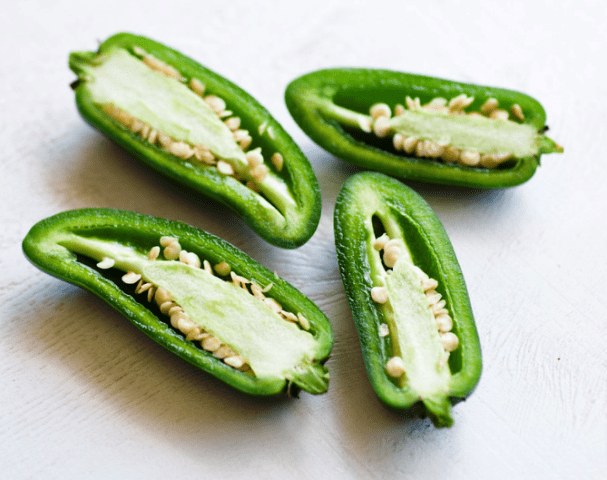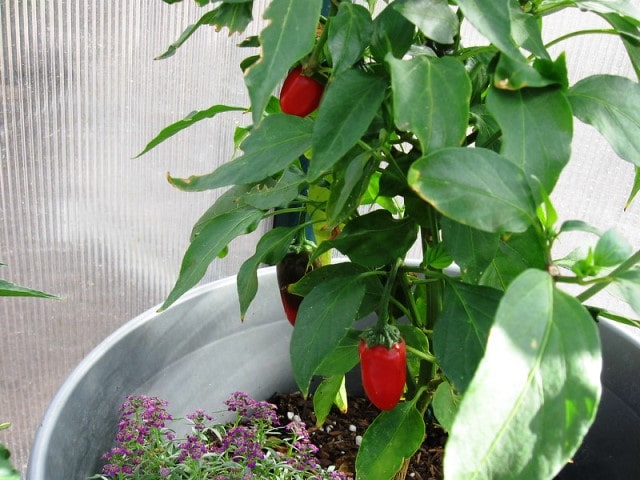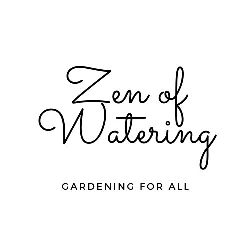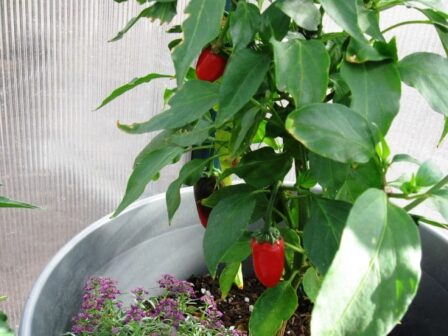The Jalapeno pepper is a cultivar that ranges from mild to medium heat, and it is well-recognized for its cultural and culinary importance in Mexican cuisine. They sit between poblanos and habaneros on the Scoville scale, registering between 2,500 and 8,000 units. There is a good chance you have seen them in the produce section of your local supermarket. It is usual to cultivate, consume fresh, or pickle them before being used as a condiment in cuisine in any part of the globe. Since you can use them in a wide variety of dishes, jalapenos have quickly become one of the most popular peppers grown in a summer garden.
Reasons to cultivate jalapenos in your backyard.
Even though you can buy them at the store in a semi-fresh state, they are still not as fresh as ones straight from the plant. Nothing can beat fresh produce. Even though you can buy them at the store in a semi-fresh state, they are still not as fresh as ones straight from the plant. Buying one or two peppers at a grocery shop is more expensive and results in a smaller output than growing peppers from seed, which results in a larger yield.
How to grow jalapenos from fresh seeds?
To grow jalapenos from seed does not require much time or effort. The temperature of the soil for germinating Jalapeno seeds must be at least 65 degrees Fahrenheit before you can plant them. It is the single crucial point to keep in mind while planting them. For this reason, several gardeners will start their seedlings indoors before the growing season, approximately eight to ten weeks before the last frost. So that you can transport the seedlings to their growing site by the time the soil is ready. It will allow the seedlings to have a head start on the growing season. It is best to wait until nighttime, as temperatures are typically around 60 degrees Fahrenheit before transplanting young plants outside.
There should be around 14 to 16 inches of space between the seeds and two to three feet between rows. Since jalapeno plants need a lot of space to develop and spread their roots, never crowd them while growing. If you are starting from seed, ensure to thin out the plants. It is because, when they begin to develop, the seedlings with the best chance of survival get the necessary space to flourish.
Planting jalapeno seeds in pots

Growing plants in pots and containers is a sensible option if you live in an urban setting but still want to get a bounty of summer vegetables. If you have a little space, plenty of sunshine, and a few potting pots, grow them at your home. The jalapenos cultivation in pots and containers will be the primary emphasis of this lesson.
If you opt to grow jalapenos from pots, you will need various-sized containers to accommodate the growing plants. It is not necessary to buy a wide variety of potting containers. However, a final container capacity of at least 2 gallons is necessary for jalapeno plants, whether grown from seedlings or purchased at a shop. Terra cotta planters are superior to plastic planters due to their ability to aerate the soil, so always go for them.
You can always make a trip to your local nursery and pick up a couple of baby jalapeno plants. This section provides instructions on how to grow jalapenos besides seeds. Germination and growth of jalapeno plants are both slow processes. Because of this, we advise you to start with the seedlings eight to ten weeks before the date of the last frost in your area.
MORE POSTS: Sage Growing Guide for Beginners
How to Sow the Seeds and Allow Them to Germinate?
First, find out how many plants you want to cultivate, and then be ready to use the appropriate number of containers for those plants. In the beginning, you can use 20-ounce colorful Coke bottles split in half with a drainage hole in the bottom. The Jalapeno seed germination temperature is sixty-five degrees Fahrenheit.
Fill the pots with potting soil and then water them well. Drain any surplus water away. At a depth of about a quarter of an inch, plant two or three seeds in each container. Even if all the seeds do not sprout, it is still a good idea to plant a few extra just in case none of them does not germinate.
After covering the seeds with soil, set them in a warm environment (75–80 degrees Fahrenheit) with low light levels. If you maintain a consistent moisture level in the soil, your seeds should begin germinating in 14–21 days.
If you notice that your soil is drying up too soon, you can prevent it from happening by draping a piece of plastic wrap over the top of each container loosely. It will have the effect of a humidity dome, which will help maintain a consistent climate by increasing the amount of precipitation. When you use this strategy, the seeds will germinate more quickly and with more success. If you do not want to use Coke bottles or other recycled containers, another option that might work well is a seedling tray that you can purchase from a shop.
Take Care of Your Seedlings and Transplant Them When Ready
It is time to take care of the seedlings when the seeds sprout. You will be responsible for providing care for the seedlings indoors until you can transplant them outdoors after all dangers of frost have gone.
How to Preserve the Viability of Young Seedlings?
When the seedlings develop their first set of leaves, relocate them to a warm place with enough light. It is required and is important that you never subject the seedlings to temperatures lower than 65 degrees Fahrenheit.
In addition, the seedlings will require a lot of light, ideally between 14 and 16 hours every day. If you do not have access to any window sills facing south, an alternative solution is to use artificial growth lights, which will provide the necessary heat and light.
Always try to maintain an even moisture level in the soil, but never overwater. Jalapenos thrive in completely wet soil, but if waterlogged, the plant may suffer from root rot. It is very important to keep in mind that indoor plants do not need much watering to keep their moisture levels stable. Water your seedlings once or twice per week.
MORE POSTS: How to grow green onions from store-bought onions
Take Proper Care of Your Newly Planted Seedlings
It is now time to start cultivating your plants outside. However, you have to toughen them up first before you may move them outdoors. While outside, you are responsible for providing them with sufficient sunshine, water, and fertilizer.
- Hardening Off
Before you take your plants outside, you will need to “harden them off”. It will prepare them for the harsh conditions outside. The way of progressively exposing a plant to the outside environment and putting it permanently outside is referred to as “hardening off.” This is very necessary for the health of the plant.
- Light requirements: minimum of six hours of sunshine each day in direct exposure.
- You should water the soil regularly whenever it dries out to a depth of approximately an inch. But be careful not to overwater it.
- The soil must have enough drainage and adequate moisture.
2. Sunlight
Ensure that your plants are in an area exposed to a sufficient quantity of sunlight. Remember that mature plants need 8 to 10 hours of daily exposure to direct sunshine.
3. Watering
Growing plants, much like their younger counterparts, do best in soil consistently maintained damp to the core. If you water them every other day, try to meet their moisture requirements. Take care not to overwater the plants, as this might cause the roots to rot.
4. Fertilization
If you cultivate your plants in potting soil of good quality, then there is no need to add fertilizer until about one month from the date they were planted in the containers or kept outside. Fertilize them with a dosage of one-third of the one suggested for every third watering. Instead of giving the plants a high dosage once or twice throughout their lives, it is better for the plants if you give them a dilute solution more often. Keep feeding the plant until two weeks before you harvest the first pepper.
Harvest Your Peppers

At long last, you have reached the most exciting portion of the story! It is time for you to get compensation for your hard work. It will take almost 90 to 120 days for the peppers to mature from seed to a point where you can use them. It has been quite some time, but it seems like the wait is to be well worth it.
Both the green and red parts of the jalapeno pepper are edible. Naturally, it will take a little bit longer for the jalapenos to become red because of this delay (usually closer to the 120-day end of the spectrum). When you want to harvest the peppers is primarily dependent on your preferences. Picking the peppers while they are still in their green state is one way to boost the overall output of your plants. It will cause more blooms to form, which will result in an increased yield of peppers for you.
Summing it up Jalapeno peppers are one of the most versatile crops possible to grow in your garden. You can use them in different cuisines and store them for days in the refrigerator. Thus if you are looking for ways to grow jalapenos, the best one to start is to collect them from the store and plant the seeds in a container.
Can you plant jalapeno seeds from the pepper?
Yes, you can plant Jalapeno seeds from the store-bought pepper. As mentioned above, seeds of a matured Jalapeno pepper can be germinated successfully.
MORE POSTS: How to grow garlic from store bought

